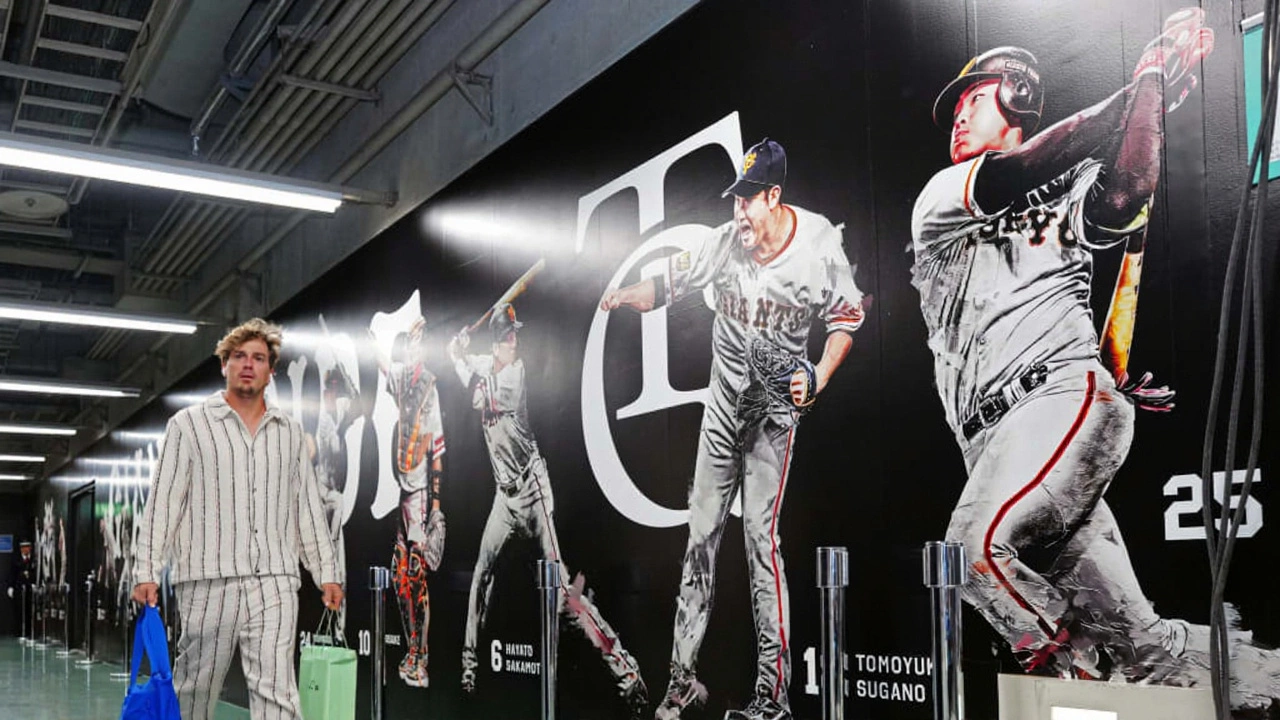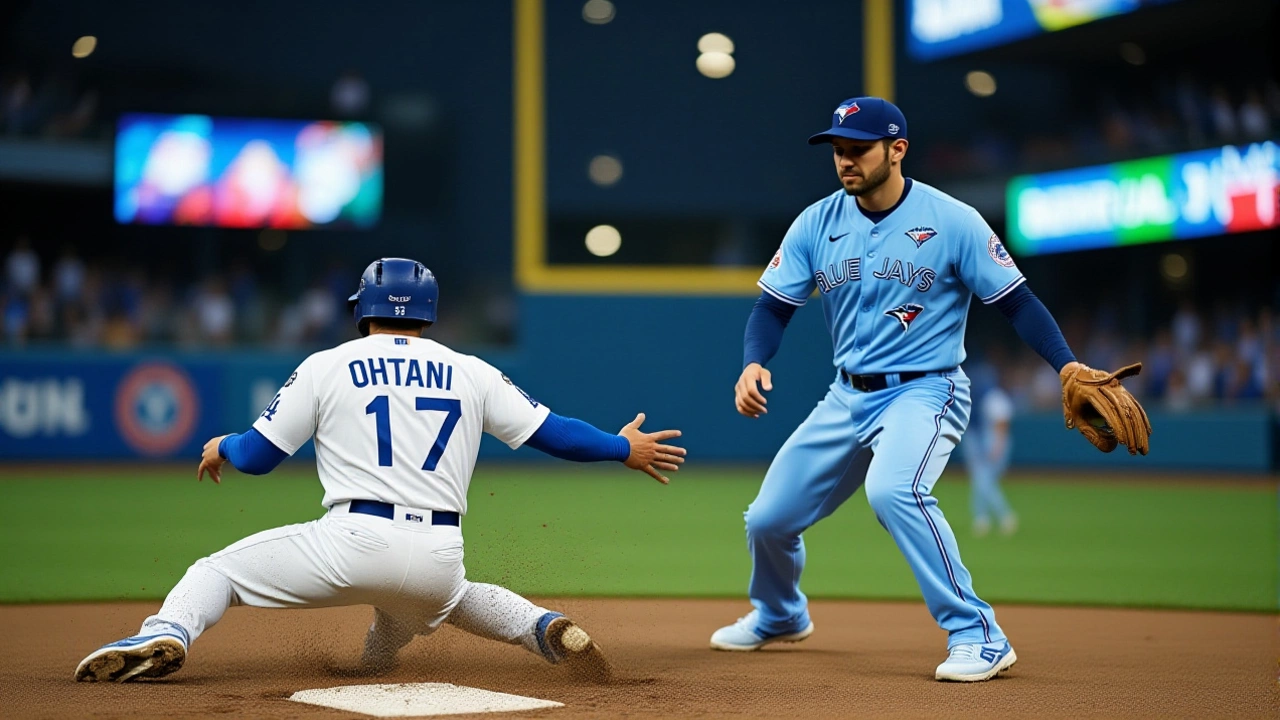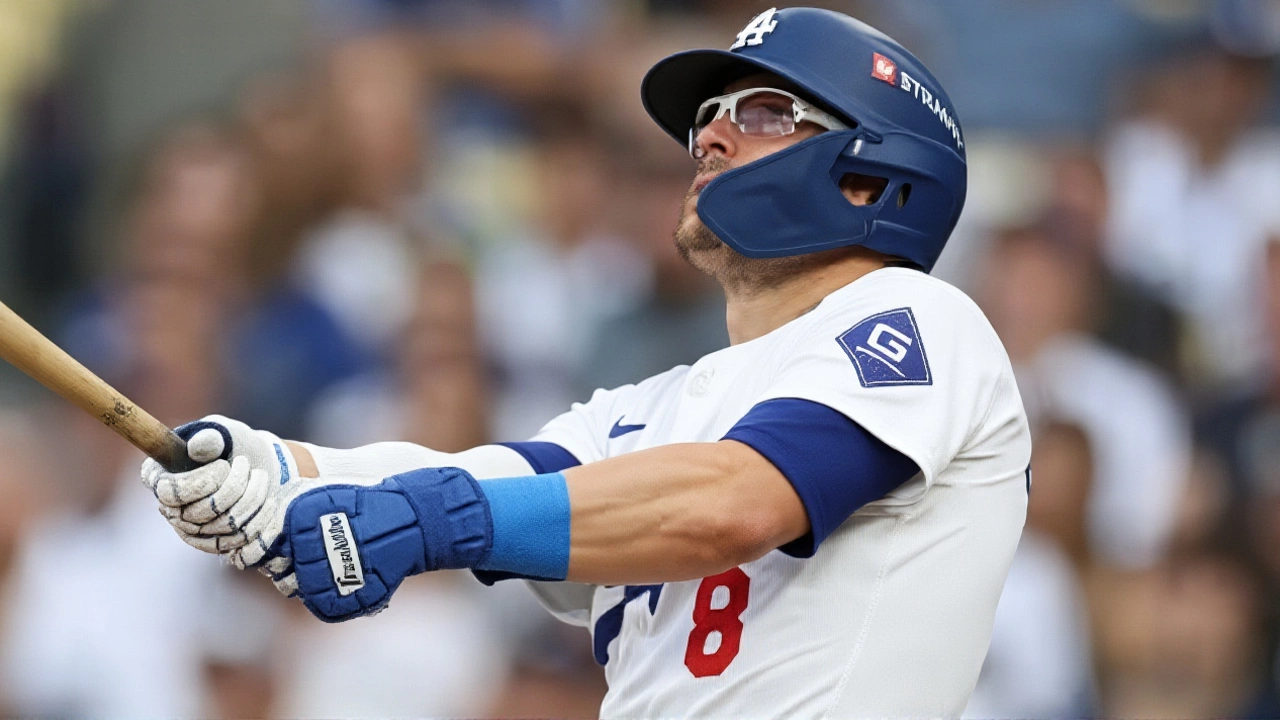The Kiké Hernández comeback story took a dramatic turn just as the Los Angeles Dodgers entered the postseason. After battling elbow inflammation for months — playing through pain, delaying treatment, and eventually enduring cortisone and PRP injections — Hernández was activated from the injured list on September 1, 2025, only to be pulled from Game 1 of the Wild Card series against the Cincinnati Reds on October 1 with back tightness. Manager Dave Roberts brushed it off: "He's playing tomorrow." But the timing couldn’t be worse. For a player whose value has always lived in his versatility, not his stats, the clock is ticking.
Playing Through Pain: The Cost of Grit
Hernández didn’t go on the injured list because he suddenly couldn’t swing. He went because he finally couldn’t hold the bat. The elbow issue started in late May 2025, after an awkward slide into home plate against the Cleveland Guardians. He kept playing. He taped it. He stretched. He took batting practice. He even wore a sleeve over his left elbow in every game except one during rehab — a quiet nod to Shohei Ohtani, whose own pain management routines he’s studied. "I felt like I could play," Hernández admitted after his return. "By the time we did the MRI, it was a little too late." The numbers tell the story of his struggle: just 8 hits in 59 at-bats over his final month before the IL. His .195/.259/.367 line for the 2025 season was his worst since 2018. But Roberts knew better than to judge him by averages. "He’s the guy you want in the ninth inning with the game on the line," Roberts said in July. "He’s played six positions this year. That’s not luck. That’s preparation."The Rehab Roadmap: From Cortisone to Contact
The Dodgers didn’t rush him. After the initial 10-day IL stint, Hernández spent nearly two months in recovery. He got two injections — cortisone to reduce inflammation, PRP to stimulate tissue repair. He didn’t just swing a bat; he ran, fielded, threw, and even played third base during five rehab games with the Oklahoma City Dodgers. He went 5-for-14 (.357) with two doubles and three RBIs. His bat felt alive again. His glove? Still sharp. He handled left field, center, and third with the same fluidity that made him a fan favorite in 2021 and 2023. On August 11, Roberts confirmed Hernández was pain-free and doing baseball activities. By September 1, he was back — activated with infielder Buddy Kennedy being designated for assignment to clear the 40-man roster spot. The move wasn’t just about depth. It was about belief. The Dodgers re-signed Hernández in the final hours of the 2024 offseason, betting on his postseason magic over his regular-season inconsistency. That bet paid off in 2021, when he hit .341 in the playoffs. In 2023, he delivered a walk-off homer in Game 3 of the NLCS. This year? He was supposed to be the spark plug. Instead, he was the mystery.
Postseason Pedigree vs. Regular Season Struggles
Hernández’s 2025 regular season was a disappointment. Eight home runs. 22 RBIs. A .708 OPS. But here’s the twist: in 87 career postseason games, he’s a .283/.356/.524 hitter. That’s not a fluke. That’s a pattern. He thrives under pressure. He doesn’t need to hit .300 to matter. A key single. A stolen base. A diving catch in left. That’s his currency. Roberts has said repeatedly that Hernández’s value isn’t in his stats — it’s in his adaptability. When Max Muncy went down with a bone bruise, Hernández filled in at first. When Tommy Edman fractured his toe, Hernández slid to third. He even played shortstop once this year. That’s why the Dodgers didn’t trade him at the deadline. That’s why they didn’t let him walk in free agency. They knew what he could do when the lights were brightest.Back Tightness in the Playoffs: A New Hurdle
Then came October 1. Game 1 of the Wild Card series. Dodgers up 8-2 in the seventh. Hernández, playing left field, winced after a routine fly ball. He was removed. Alex Call replaced him. The crowd didn’t notice. The broadcast didn’t dwell on it. But inside the clubhouse, the staff took notes. Back tightness in a player who’s already been through elbow hell? It’s not ideal. Roberts, ever the calm voice, said: "We’re just being smart. He’ll be in there tomorrow." And sure enough, Hernández started Game 2 on October 2 — going 1-for-3 with a walk and a stolen base. The Dodgers won 10-5. The message was clear: they’re not risking him. They’re managing him. And if he’s healthy for Game 3? He’ll be the guy they trust to deliver the big hit.
What’s Next for Kiké?
The Dodgers are in a win-now mode. Their rotation is deep. Their bullpen is elite. But their lineup? It’s thin on contact hitters who can move the needle in high-leverage spots. Hernández isn’t the cleanup man. He’s the guy who gets on base, steals second, and forces the pitcher to make a perfect throw — one that might go awry. His return from the elbow injury was a triumph of resilience. Now, the real test begins: staying healthy long enough to make an impact when it matters most. He’s 33. His body has taken hits. But he’s still got that spark. That grit. That willingness to play through pain — even if, as he admitted, it was "kind of dumb on my end." The playoffs aren’t about perfect health. They’re about who’s willing to show up. And Kiké Hernández? He’s never missed a beat.Frequently Asked Questions
Why did Kiké Hernández wait so long to go on the injured list?
Hernández played through the elbow inflammation for over a month after aggravating it in late May 2025, believing he could still contribute. He only sought medical attention when the pain made it difficult to hold the bat, leading to a .136 average in his final 59 at-bats before the IL. His decision reflects a common mindset among veteran players who prioritize team needs over personal rest.
How did the Dodgers manage his recovery?
The Dodgers opted for conservative treatment: cortisone injections to reduce inflammation and PRP therapy to promote healing. He completed five rehab games with Oklahoma City, playing multiple positions and posting a .357 average. His return on September 1 was timed to maximize his availability for the stretch run and playoffs, with Buddy Kennedy being DFA’d to clear a roster spot.
Why is Kiké Hernández still valuable despite his poor 2025 stats?
His career postseason line of .283/.356/.524 in 87 games dwarfs his regular-season .236 average. He’s played six positions in 2025, offering roster flexibility that’s rare in modern baseball. Managers value his ability to adjust mid-game, his defensive instincts, and his calm demeanor under pressure — traits that don’t always show up in OPS or batting average.
What does the back tightness mean for his playoff chances?
While concerning, the injury appears minor — Roberts confirmed Hernández would play in Game 2 just hours after being removed from Game 1. The Dodgers are likely managing his workload carefully, avoiding unnecessary strain. Given his history of playing through discomfort, the team will monitor him closely but won’t bench him unless pain escalates significantly.
How does Hernández compare to other utility players in MLB history?
Hernández fits the mold of elite utility players like Ben Zobrist and Marwin Gonzalez — players whose value lies in adaptability, not star power. Unlike pure power hitters, his impact comes from defensive versatility, situational hitting, and postseason poise. Few players in recent memory have matched his ability to fill multiple roles without sacrificing defensive competence.
Will the Dodgers re-sign Hernández after 2025?
His 2025 performance makes a long-term deal unlikely, but his postseason track record and clubhouse presence could earn him a one-year, incentive-laden contract. The Dodgers have shown willingness to pay for intangibles — as seen in their last-minute re-signing of Hernández in October 2024. If he delivers in October, he’ll be back in Dodger Blue next spring.
